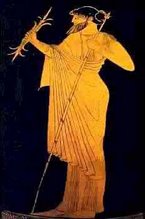
I have spoken with other ancient coin enthusiasts who have problems photographing coins with black patinas and especially black and shiny patinas. The “noise” is profoundly visually disturbing and looks a great deal like snow on the coin. I think I have made some headway towards resolving the problem. I will share what I have discovered.
First, the noise as I understand is the result of the white points or “snow” being underdeveloped. Consequently we need for the noise to receive more light. I think each person I have spoken with has encouraged me to shoot at f/11. I have opened the aperture to f/5.6 and I get much better results. It occurred to me that if we need more exposure then we actually need to admit more light. The coin is also thin enough that we don’t have to worry about depth of field.
In addition, my Canon XTI has a setting where I can increase exposure time and I did so by a plus (+) 1. I immediately saw better results. The coin you see above left is a very black and shiny coin. I think the coin photo is highly acceptable. I know we have a variety of cameras within our groups and I don’t have the answer to all cameras.
Therefore the responsibility of learning to use your camera falls on your shoulders. I would love to see members who have had this problem give my report a try. If you do and if you discover additional information, please share. It appears the path to learning to photograph coins is a long and arduous one. We are still in the infancy of ancient coin photography and our coins present problems not found with contemporary coins. Thank you for reading and I hope this exercise helps you as it has me.. God Bless.. Jerry.. PS: We have a Coin Photography group at the following URL if you would like to join:
http://groups.yahoo.com/group/coinphotography
First, the noise as I understand is the result of the white points or “snow” being underdeveloped. Consequently we need for the noise to receive more light. I think each person I have spoken with has encouraged me to shoot at f/11. I have opened the aperture to f/5.6 and I get much better results. It occurred to me that if we need more exposure then we actually need to admit more light. The coin is also thin enough that we don’t have to worry about depth of field.
In addition, my Canon XTI has a setting where I can increase exposure time and I did so by a plus (+) 1. I immediately saw better results. The coin you see above left is a very black and shiny coin. I think the coin photo is highly acceptable. I know we have a variety of cameras within our groups and I don’t have the answer to all cameras.
Therefore the responsibility of learning to use your camera falls on your shoulders. I would love to see members who have had this problem give my report a try. If you do and if you discover additional information, please share. It appears the path to learning to photograph coins is a long and arduous one. We are still in the infancy of ancient coin photography and our coins present problems not found with contemporary coins. Thank you for reading and I hope this exercise helps you as it has me.. God Bless.. Jerry.. PS: We have a Coin Photography group at the following URL if you would like to join:
http://groups.yahoo.com/group/coinphotography






